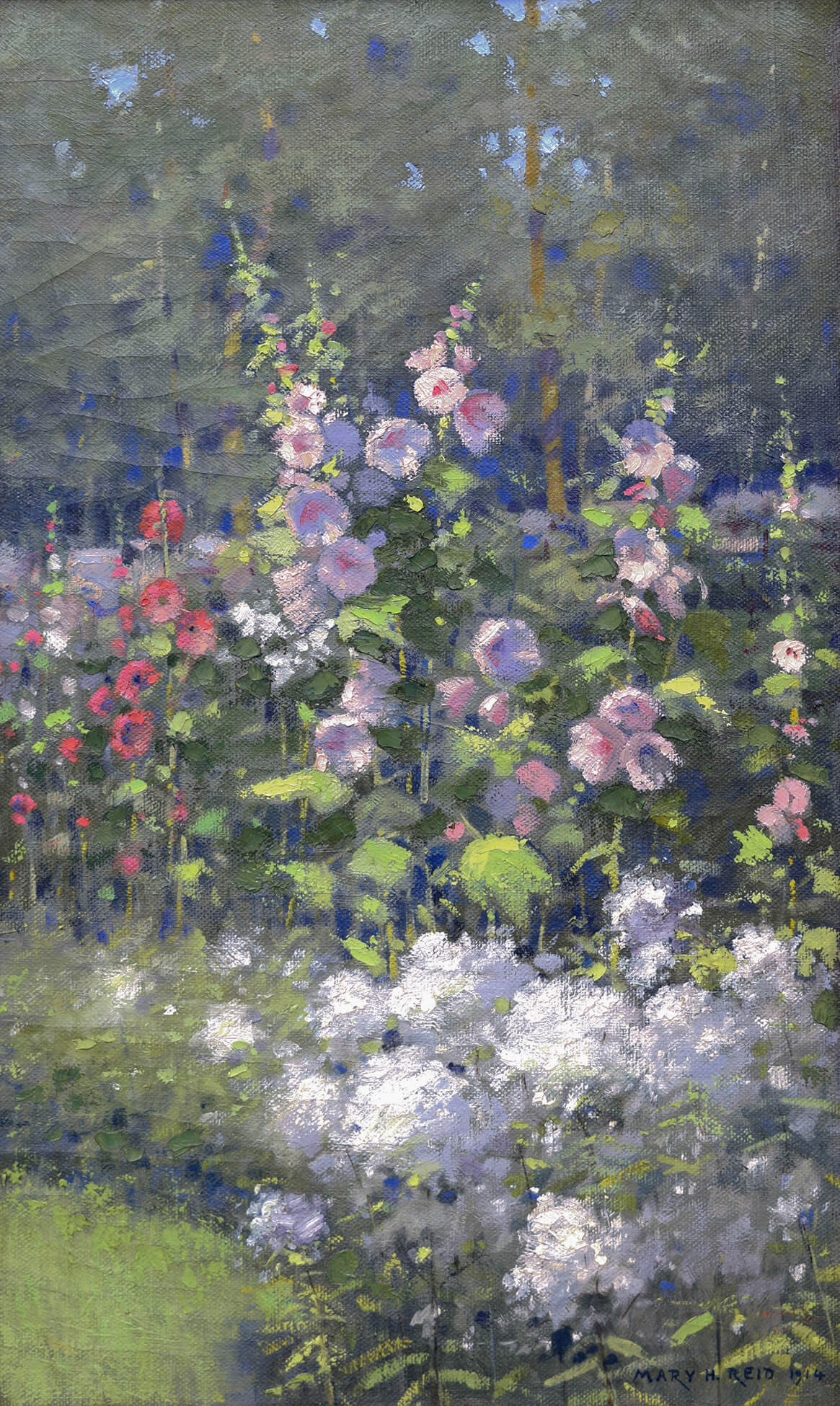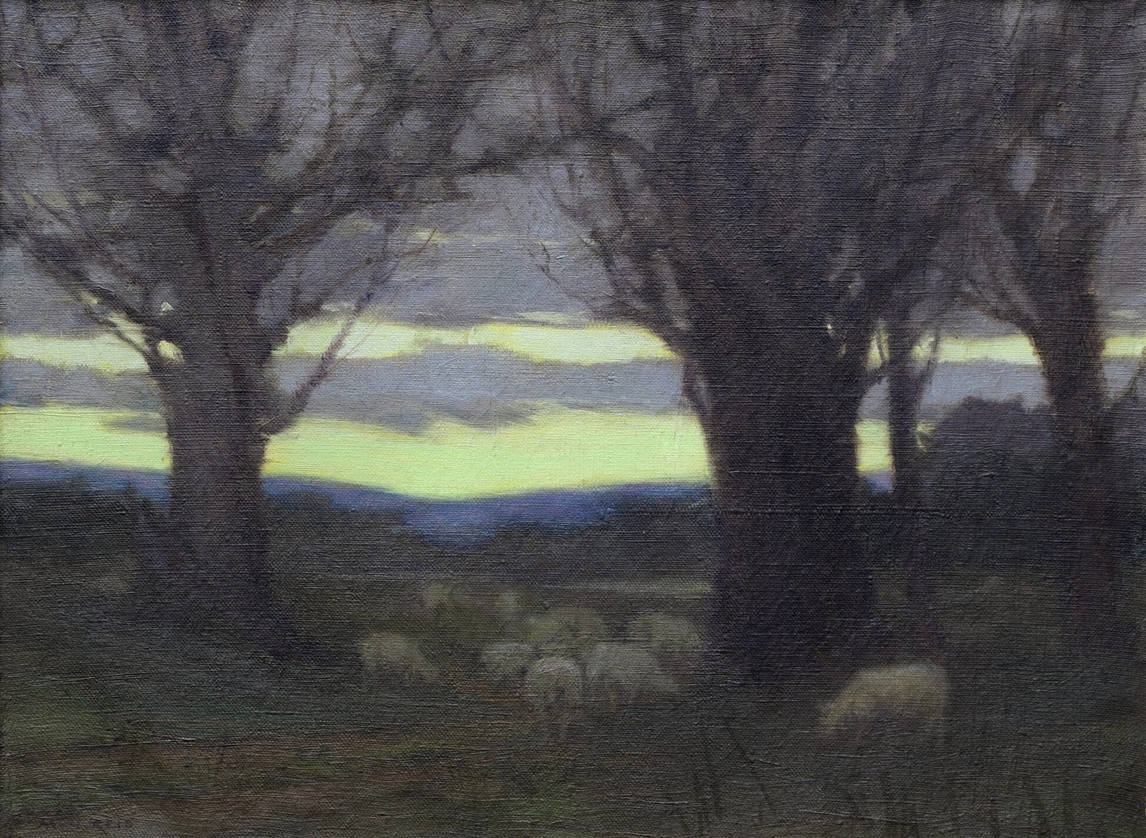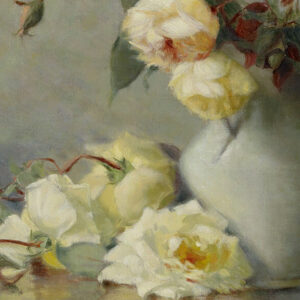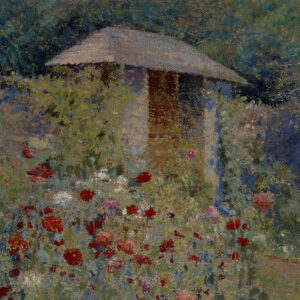Hollyhocks 1914

Mary Hiester Reid, Hollyhocks, 1914
Oil on canvas, 91.4 x 55.9 cm
Reading Public Museum, Pennsylvania
Late in her career, Hiester Reid garnered critical acclaim for garden paintings such as this one. Summer blooms in pastel shades of red, pink, and lavender dominate the canvas, spanning the extreme foreground and back into the middle ground across the horizon line. The curators of the Reading Museum, Pennsylvania, speculate that Hollyhocks may depict the gardens of American interior designer and Onteora Club founder Candace Wheeler (1827–1923) and thus may highlight Hiester Reid’s connection to the United States through both her citizenship and choice of subject matter. The Reids spent their summers from 1891 to 1916 painting and teaching art classes at Wheeler’s Onteora Club, a private literary and arts community in the Catskill Mountains near Tannersville, New York.

Not only did Hiester Reid paint these types of scenes, she also designed and worked in an extensive garden landscape located at her home in Wychwood Park. Critics appreciated how her experience played out in her painting. As one reviewer of the 1922 memorial exhibition writes, “Mrs. Reid was pre-eminently the painter of the garden. . . . She not only caught their wonderful and diversified colour and their varied and decorative arrangement, but their very fragrance seems part of the picture. . . . It is not the garden of the old world, but the little havens of delight constructed by people in our own midst.”
After Hiester Reid’s death, George Agnew Reid (1860–1947) donated Hollyhocks to the Reading Public Museum located in the town of her birth and early childhood years. Up until this point, the museum owned no works by Hiester Reid, so this donation may have spurred the institution to purchase another of the artist’s works in 1927, Landscape with Sheep, c.1902–10. Significantly, the museum lists the artist’s nationality as “American (worked in Canada),” a fact that art critics also noted during the memorial retrospective. As journalist and arts commentator Hector Charlesworth (1872–1945) wrote in his review of the Toronto show, “Though Canada cannot claim Mrs. Reid as a native daughter, she was truly a Canadian painter, for her life’s work was done in this country and she became a Canadian as early as 1885 through her marriage with the distinguished painter, George Agnew Reid, R.C.A., whom she had met while the latter was a student from Wingham, Ont., at the Philadelphia Academy of Fine Arts [sic].” That both countries laid claim to Hiester Reid as one of their own signals the artist’s successes in her lifetime and beyond.

 About the Author
About the Author
 More Online Art Books
More Online Art Books
 Acknowledgements
Acknowledgements